2024 CF Moto 450SS vs Aprilia RS457 – Street and Track

Can a Chinese upstart really challenge the might of Aprilia?
CFMoto has been making waves with its motorcycle lineup by turning the tide on public perception of Chinese motorcycles. We experienced it first with the 700 CL-X in our $7,000 Shootout, then with the 800 NK naked bike, and then with the Ibex 450 after that. And honestly, we should have been paying attention earlier, as guest tester William Roberson came back with positive things to say during his First Ride review of the CFMoto 450SS back in July of 2023. Though all the bikes have their quirks, we’ve been impressed with CFMoto’s fit and finish, which we’d put up against any of its contemporaries. Then, of course, there’s the price. Routinely on par, or less than, the competition, CFMoto’s price point is one of its most attractive features.
Aprilia RS457
The entry-level sportbike for Aprilia fans, the RS457 carries clear DNA from its RSV4 bigger brother.
Highs
- Best chassis in the class
- Natural ergonomics
- (Arguably) better looks
Sighs
- Buzzy engine
- More displacement but less power
- Added electronics = higher price tag
CFMoto 450SS
An entry-level sportbike with a lot of performance and an attractive price, the 450SS is an appealing option for new or newer riders.
Highs
- Silky smooth engine
- Mo powah(!) and slick gearbox
- Hard to argue with that price tag
Sighs
- Handling is a tick behind the Aprilia
- Weird ergos
- Weak dealer/aftermarket support
After riding the 450SS myself, I’ve come away very impressed with what CFMoto have done. The brand’s best-selling model (at least in the US), the 450SS has been the most polished of the CF’s I’ve sampled so far. That’s all the more impressive considering it’s a complete in-house design whereas, say, the 800 NK is basically a re-badged KTM 790 Duke.
But riding a bike in isolation is one thing. I wanted to know if the 450SS could hold its own against another new player in the small-displacement category – none other than Aprilia’s RS457. The little sportbike class is littered with bikes of varying performance levels, and after riding the Aprilia RS457 at its press intro, I was pretty enamored with its performance – at least on the track, which was my only experience with it thus far. Naturally, it was time for a comparison test.
By The Numbers
First thing’s first: the price. Unsurprisingly, the 2024 Aprilia RS457 costs more, wearing a price tag of $6,899. Meanwhile, the CFMoto 450SS costs $5,699. Our particular RS457 test bike came outfitted with a slew of accessories like anodized pegs and levers, crash protection, and the all-important bi-directional quickshifter, bumping the price an additional $1,073.
Beyond the price, let’s look at the bikes themselves. Both bikes are 8-valve, DOHC, parallel-Twins, and both even have a 270° firing order, giving them a cool V-Twin-like sound. The Aprilia’s engine is a little bigger at 457cc compared to the CFMoto’s 449cc. Looking at bore and stroke ratios, the Aprilia reaches 457cc with a 69.0mm bore and 61.1mm stroke. Meanwhile, the CFMoto’s engine measures 72.0mm x 55.2mm. I bring this up because it translates into how both bikes make their power, as evidenced by the dyno graphs below.
With its bigger bore and shorter stroke, the 450SS engine is a high revver, and in doing so it makes more power than the Aprilia, 46.3 to 43.5 en route to its 11,500 rpm redline. Generally, a longer stroke (for a given displacement) equates to more torque and the RS457 showcases this, as it makes more torque, 29.6 lb-ft to 27.8 lb-ft en route to its 10,400 rpm redline. Of course, the slightly bigger engine doesn’t hurt, and you can see the Aprilia outperforms the CF until the 457 engine runs out of steam. The two engines also differ in that the CFMoto has two counterbalancers, while the Aprilia only has one, like the RS660. This will be important later on.
Looking at each bike’s dimensions, both are closely matched. The Aprilia’s seat height measures 31.5 inches, with the CF’s only 0.5-inch shorter at 31.0 inches. Neither is particularly high considering the narrowness of the seat/tank junction, and my 30-inch inseam didn’t have any problems putting the balls of my feet on the ground. Wheelbases are closely matched, too, with the CF’s 53.5-inches center-to-center just a tick longer than the Aprilia’s 53.2 inches. Rake and trail numbers are again close; the Aprilia’s 24.1° rake just 0.1° more than the CF’s 24.0º. Both bikes share an identical 4.0 inches of trail. The RS457 is a little heavier, with a claimed curb weight of 388lbs versus the CF’s 370lbs. That’s all the more interesting considering the 450SS carries more fuel – 3.7 gallons vs. 3.4 gallons.
With such similarities, at least on paper, riding them would reveal the true differences between the two. Being sportbikes, naturally we took both bikes to Buttonwillow Raceway, where guest tester and former MO staffer Tom Roderick joined me on track as part of its Aprilia Racer Days trackdays. Then it was off to the street to see how both behaved in the real world. To level the playing field in tire performance, Pirelli Supercorsa SPs were spooned onto both bikes. Being road-legal tires with a track-focused lineage, these were the perfect do-it-all tires for the job.
Track Impressions
It doesn’t take very long on track to remember the RS457 comes from a lineage of track-focused machines. “Aprilia engineers gifted the RS457 with a little RSV4 chassis magic as I was able to comfortably get up to speed quickly,” says Tom. “It reminds me of its big brother’s friendly handling manners.” And by big brother, Tom could easily be referring to both the RS660 or the RSV4. Though I’m sure he means the latter.
Tom’s immediate reaction echoes what I felt when I first tasted the RS457 at its intro. The aluminum chassis (as opposed to the CF’s steel trellis) is far better than anything else in this class. Both bikes turn in easily, but the RS’s bars are angled slightly wider, giving the rider more leverage to tip it on. Once leaned over, the Aprilia is more rigid, inspires more confidence, and feels more planted mid-corner.
Meanwhile, the CF’s ergos take some getting used to. The bars are narrow and not only are the pegs high, but they’re also relatively forward (instead of rearward like most sportbikes). You get used to it after a few turns, only to find the narrow bars require more effort to turn the bike. And since I’ve already mentioned how much better the Aprilia chassis is, you can guess what’s coming next for the CF’s. The 450SS chassis flexes more, which can be unnerving for some, especially having ridden the Aprilia back-to-back. However, you really have to be pushing to notice, and if either of these are machines you’re starting your moto journey on, then it might not apply.
That said, there’s no getting away from the Aprilia’s better chassis. Still, getting comfortable with a loose bike like the CFMoto can be fun – if you’re wired that way. Neither machine is exactly well suspended, but at least the Aprilia offers preload adjustment at both ends, and according to Tom anyway, was “clearly better suspended for track duty.” I can’t say I necessarily agree, as neither bike handled high-frequency bumps very well, transmitting a lot of those jolts to the rider. Lowering the tire pressure was the last-ditch solution to help with that since we couldn’t change the fork or shock much, which only exacerbated the chassis impressions for both machines.
The real difference between these two bikes is their engines. As Tom notes, “Both are powered by liquid-cooled, DOHC, parallel-Twin engines with 270-degree firing orders, [but] their power delivery is surprisingly different. The Aprilia performs better when short-shifted, keeping the tach needle in the thick of its midrange, while the CFMoto’s Twin prefers climbing to redline before being shifted to the next gear. It never ceases to amaze me how two outwardly similar bikes such as these exude very different character traits when alternately ridden one track session after another.”
This right here is the heart of the matter. Because the Aprilia makes more torque, it’s best to ride that torque curve. This means short shifting to keep it in the meat of the power for as long as possible. You’re shifting a lot, too, because from where we were sitting, it felt like the RS457’s internal gearing was very short and closely spaced together; we were grabbing shifts quickly and getting to sixth in no time. This then exposes its weakness compared to the CF – horsepower, or lack thereof.
Obviously neither bike is a power monster, but you’d expect the 457 to have more than the CF with its bigger engine. But the opposite is true, and Tom and I saw this play out on track. Coming out of corners, the Ape would pull ahead a little bit only for the CF to reel it in once its engine was able to sing up top. The 450SS also felt like it had wider internal gearing, allowing the engine to stay in its power band for longer while also not requiring as many shifts per lap.
Speaking of shifting, our Aprilia test bike was fitted with the optional bi-directional quickshifter while the CFMoto shifted the old fashioned way. Normally I’m a big advocate for quickshifters, and maybe it was our particular test bike, but the shifts on our RS457 were not very smooth in the lower gears. This would just get worse on the street as you’ll see soon. In comparison, despite the fact you had to shift the CF with the clutch or a deft throttle blip, the gearbox felt tighter and engaged more positively every time.
Which brings up another point the numbers don’t explain. Remember earlier the bit about each engine’s counterbalancers? The Aprilia has one while the CF has two? The difference in vibrations is drastic, as Tom explains: “You’d think the CFMoto, with its desire to be revved, would be the more vibey of the two, but the reality is it’s the Aprilia that put the toes of my right foot to sleep during our track outing.”
Yes, it’s the Aprilia that exhibits noticeably more vibrations – enough to make appendages go numb if you ride long enough. Dare I say, it feels a bit agricultural and unrefined. The CFMoto is surprisingly smooth. Lap after lap, the 450SS doesn’t wear down its rider with vibrations. Just as the RS was surprising with how much it vibes, the CF shocked with how much it didn’t.
Neither bike goes particularly fast, but that doesn’t mean their brakes aren’t important. On the bright side, both bikes feature a single 320mm disc, a steel-braided brake line, adjustable levers, and a Brembo caliper. Technically, one bike has a Brembo M40 caliper and the other is a ByBre. Can you guess which is which?
Yep, the CFMoto gets the genuine Brembo. You didn’t guess that? It’s true, the CF gets the Brembo and the ByBre goes to the Aprilia. That said, Tom’s opinion differs from mine as to which braking system we liked better on track. Tom preferred the ByBres on the 457, claiming they gave him “better feel and power at track speeds than the mushier CFMoto.” I thought the Ape’s brakes deflected more under hard braking and the 450SS gave a more direct and solid feel.
Street Impressions
I was mainly riding solo on the street, and though most of the track impressions carried over to the street, different aspects were more prominent.
First off, the ergonomics. The Aprilia feels more natural. You’re sitting in a traditional position with no particular appendage in an awkward spot. The wide bars give a sense that you’re in command if you need to make an evasive maneuver as you slice through traffic. Not that the CFMoto’s narrower bars put you in any less control, but it does add to this feeling of being cramped. More to the point, the 450SS places your feet in a weird spot in relation to the RS457. We noted it above, but where most sportbikes have your feet up and back, the CF has them up and forward in relation. It’s awkward when switching between the two bikes, but you get used to it after a few miles. In fact, based on ergos alone, I’d pick the RS. But there’s more to a motorcycle than how you sit on it.
Again, it comes back to the engine. The Aprilia’s torque advantage is better suited for street riding, as you can keep it lower in the revs and simply add throttle when you need it. Except for one thing – there’s a noticeable flat spot in the power low in the rev range, especially in second gear and around 2000 rpm. As if that wasn’t enough, the shift from first to second when using the quickshifter is extremely abrupt and jarring. So, imagine leaving from a stop. Because the gearing is so short you’re shifting to second fairly quickly, and are greeted to an abrupt changeover. Then, as you try to accelerate in second, you’re stuck in a flat spot until the revs climb out of it. It’s annoying, to put it mildly. After that, the RS accelerates trouble free. But again, the short gearing means you’ll be shifting often.
Meanwhile, the CF isn’t as quick on the uptake when leaving from a stop, but the fueling is clean and linear from start to finish. You learn to keep the CF higher in the revs to use the relative power surplus, and again, the wider gearing helps you do that. When it’s time to shift, the traditional shifter does so with little fuss and engages cleanly and positively, even if it does take fractionally longer because it doesn’t have a quickshifter.
Then, of course, there’s the buzz. There’s no getting away from it. The CF is just smoother.
Just as on the track, the Aprilia’s chassis is more precise and agile than the CF’s, but the advantage isn’t as pronounced at a street pace and both bike’s bare-bones suspension actually veer a little bit on the harsh side for what they are.
We can’t talk about bikes aimed at newer riders without getting into a discussion about looks. Yes looks are subjective, but that didn’t stop me from conducting a very informal – and far from scientific – poll amongst anybody and everybody I came across at the track, on the street, and at the dyno. To my surprise, the majority of folks I talked to at the track, at the dyno, and even at the gas station liked the Aprilia’s looks better. I like the CF’s “face” and frontal area more, including the wings, but I admit its side profile is bland and featureless.
So, What’s It Going To Be?
Heading into this, I really didn’t know how things would shake out considering I’d only ridden the Aprilia on the racetrack. But this is why we do comparison tests. Each one is worthy of praise when ridden in isolation, but it’s not until they’re ridden side-by-side that strengths and weaknesses come out.
The 450SS impresses with how smooth it is, how user-friendly its engine is, and generally how well it’s put together. Its cheaper price tag doesn’t hurt, either. We dinged it for having weird ergonomics, a chassis that’s not quite on par with the RS457, and arguably worse suspension and brakes (at least according to our guest tester). And we can’t ignore the elephant in the room: dealer support and parts availability for the CFMoto simply isn’t as robust as it is for the Aprilia (which is saying something). As far as pure reliability goes, you likely have reservations about the CFMoto. Understandably so. For me, however, it’s simply not something I’m worried about. Searching CFMoto and 450SS owner groups online has shown people with plenty of mileage on them with little to no issues – or at least no issues that you’d experience on any other bike. Hell, I took the 450SS straight from the dealership to the racetrack with only two miles on the odometer. And it still pumped out a healthy bit of power on the dyno. What’s that they say about taking it easy during the break-in period…?
On the Aprilia’s side, the chassis jumps out as the standout feature. It’s much better than anything in this price bracket has the right to be. It’s also comfortable – that is, if you can stand the vibrations. Tom wasn't bothered by it as much, but he still made note of it and commented about how much it surprised him. Still, it’s hard to deny the point of pride if you were to roll up on an Aprilia and be the envy of your friends.
Notice I haven’t talked about electronics much, if at all. The 450SS gives you always-on ABS and a very clean and attractive TFT display (2025 versions will also include traction control and a switch from Continental to Bosch ABS). Meanwhile, in addition to the ABS and TFT, the RS457 also has different power modes and adjustable traction control.
Why weren’t they mentioned earlier? Because you don’t really need them on bikes like these making such modest power. ABS, sure. But the rest? Unnecessary in our opinions. Plus, they also bring up the price of the bike. Nonetheless, Tom ultimately chose the Aprilia as his pick. Since he only rode them on track, Tom picked the Aprilia – “vibration be damned” – as he felt it was the better track weapon, and also because, “trying to get the CFMoto to equal the Aprilia in chassis, suspension, and braking performance seems to be a pricey and time-consuming endeavor.”
I, meanwhile, chose the CFMoto because, among other things, I don’t need all those electronics on a bike this small. Yes, its chassis isn’t on the same level, but the smoothness and rideability of the engine more than makes up for it. The transmission shifts noticeably better, and the shifter even has a built-in secondary mounting option to install the shift rod if you prefer a GP-style reverse shift pattern. I’d rather save the extra money over the Aprilia and use it towards addressing the 450SS’ shortcomings. Quickshifters are already cheap and available in the aftermarket, as are replacement bars and pegs to fix the ergos. There are even performance upgrades for the fork and shock, too. In a perfect world, I’d love to explore the performance potential of the 450SS even further, but that’s getting ahead of ourselves.
There you have it. Emotions versus facts have split the room apart. Ultimately, it’s up to you to take these impressions, apply them to your situation, and make up your own mind.
In Gear – Track

- Helmet: Arai Corsair-X Schwantz 30th Anniversary
- Leathers: Alpinestars GP Force Lurv
- Airbag: Alpinestars Tech-Air 7X
- Gloves: Alpinestars GP Pro RS4
- Boots: Alpinestars Supertech R Vented
In Gear – Street

- Helmet: Scorpion EXO Eclipse
- Jacket: Cortech Hyper-Tec 2.0
- Airbag: Alpinestars Tech-Air 3
- Pants: Aerostich Protekt Jeans
- Boots: Alpinestars Superfaster Shoes
2024 CF Moto 450SS vs Aprilia RS457 – Gallery
We are committed to finding, researching, and recommending the best products. We earn commissions from purchases you make using the retail links in our product reviews. Learn more about how this works.
Become a Motorcycle.com insider. Get the latest motorcycle news first by subscribing to our newsletter here.

Troy's been riding motorcycles and writing about them since 2006, getting his start at Rider Magazine. From there, he moved to Sport Rider Magazine before finally landing at Motorcycle.com in 2011. A lifelong gearhead who didn't fully immerse himself in motorcycles until his teenage years, Troy's interests have always been in technology, performance, and going fast. Naturally, racing was the perfect avenue to combine all three. Troy has been racing nearly as long as he's been riding and has competed at the AMA national level. He's also won multiple club races throughout the country, culminating in a Utah Sport Bike Association championship in 2011. He has been invited as a guest instructor for the Yamaha Champions Riding School, and when he's not out riding, he's either wrenching on bikes or watching MotoGP.
More by Troy Siahaan


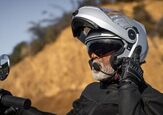





















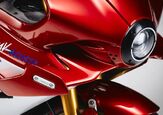
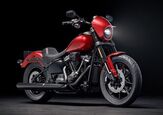
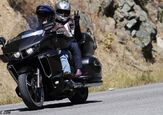

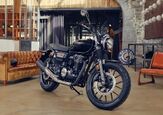




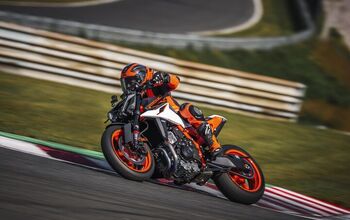
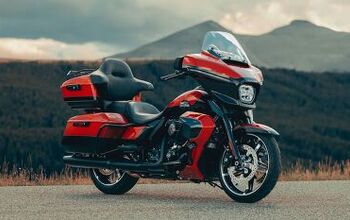
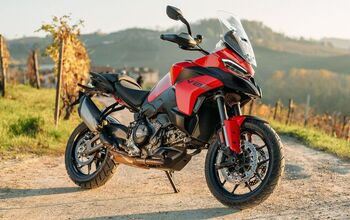


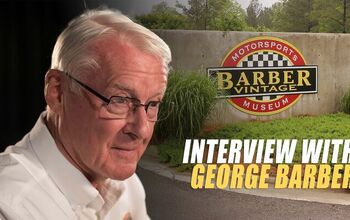
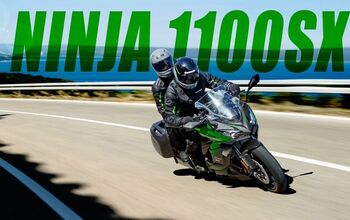

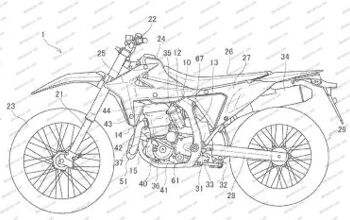
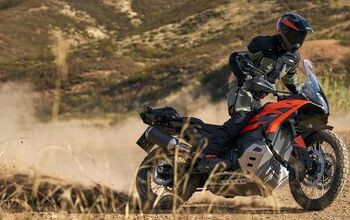

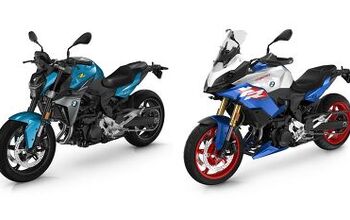

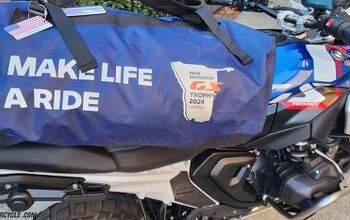
Comments
Join the conversation
Loving my RS 457 so far.
Its insanely fun to ride on a good twisty road and a hoot of laughs and thrills.
I bought it to turn into my next season track bike.
It does get buzzy on the right footpeg and there is an annoying flat spot in 2nd gear.
Hoping that the flat spot gets tuned out.
$7,000 for a 450. That's funny, Aprilia.